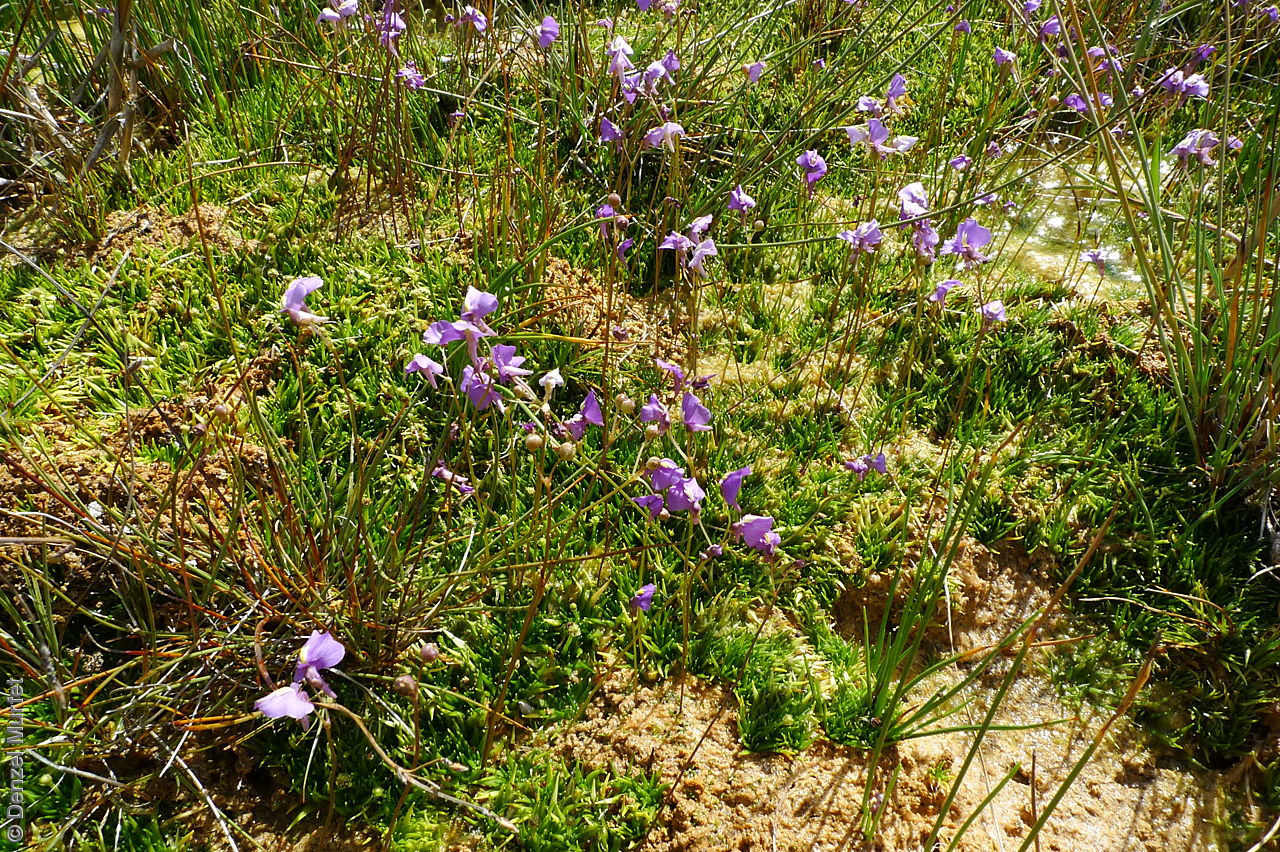
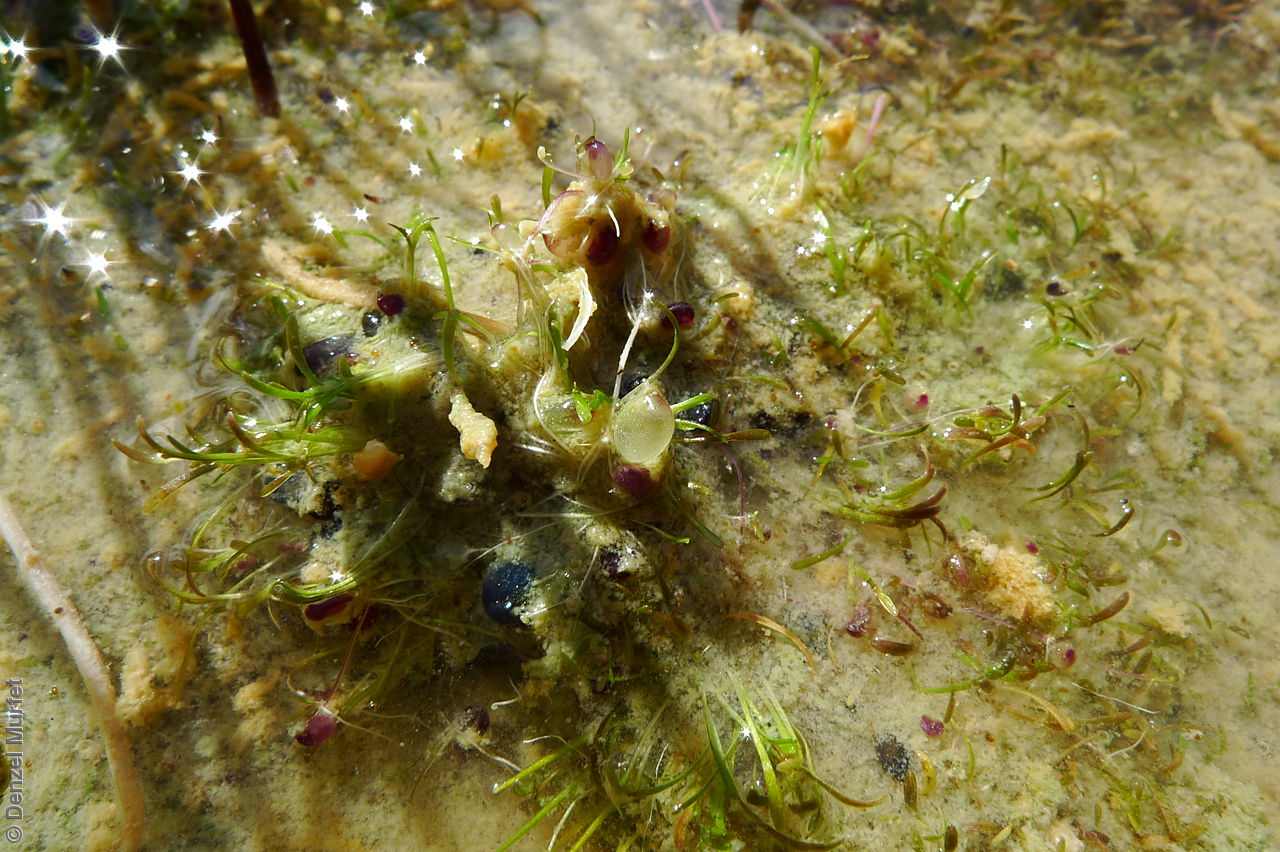
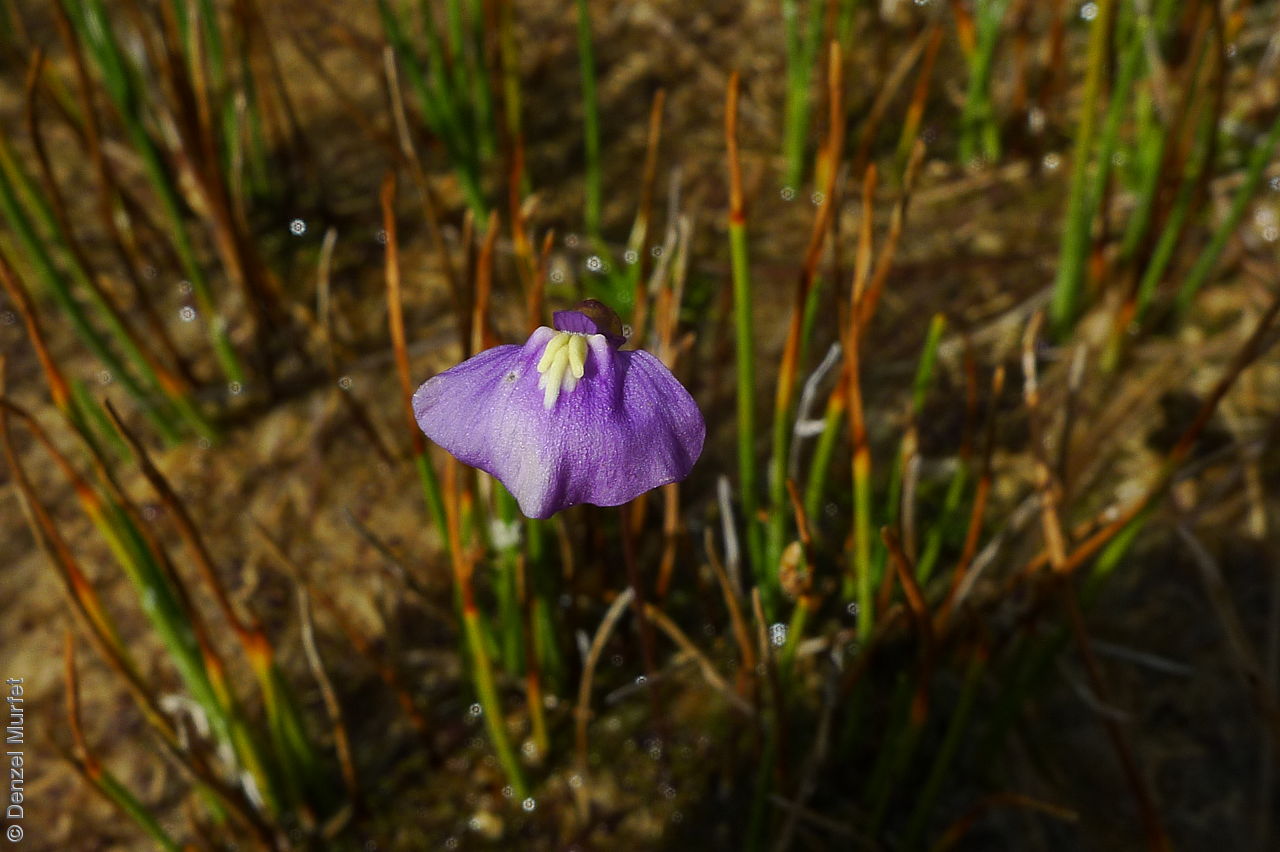
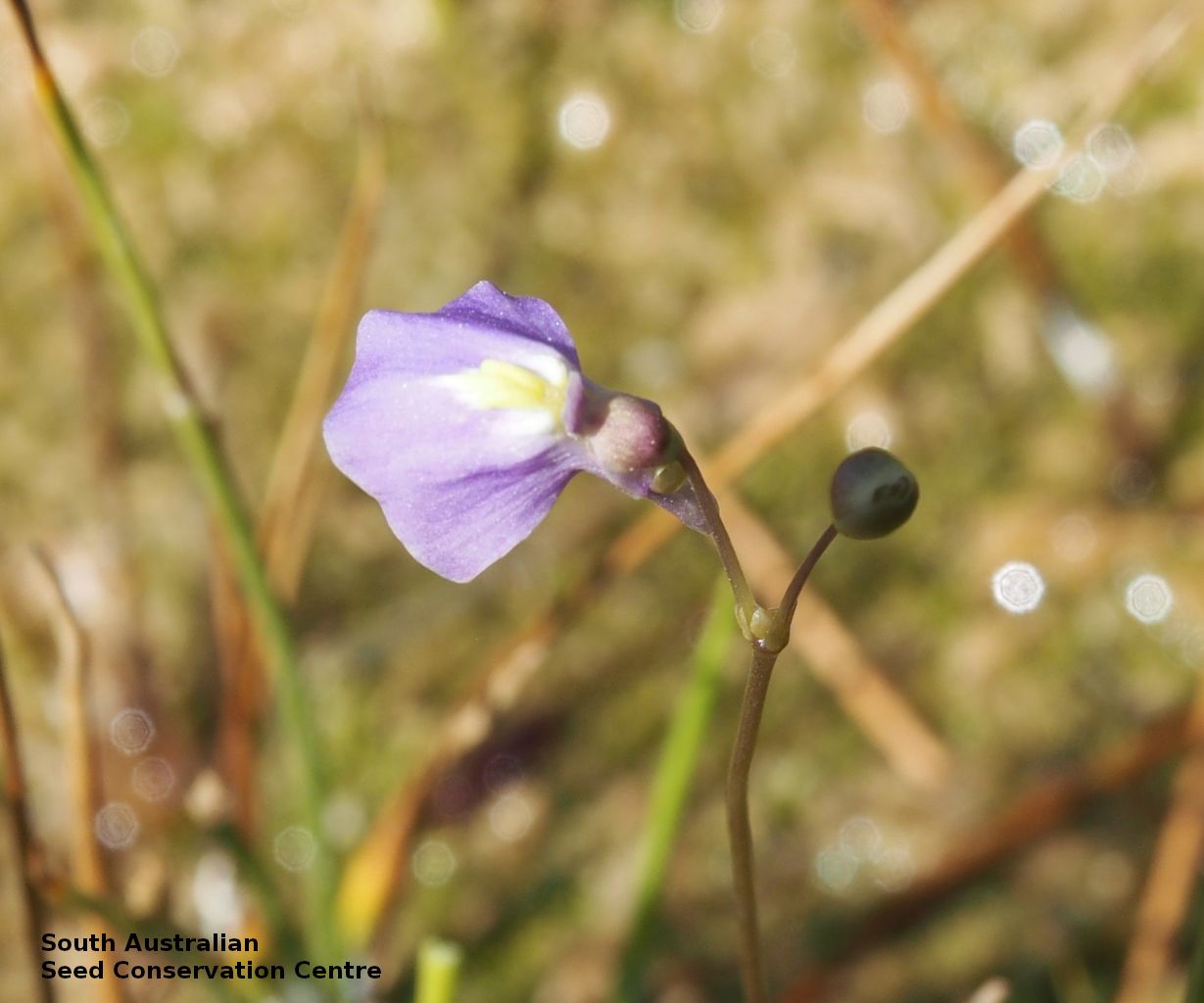
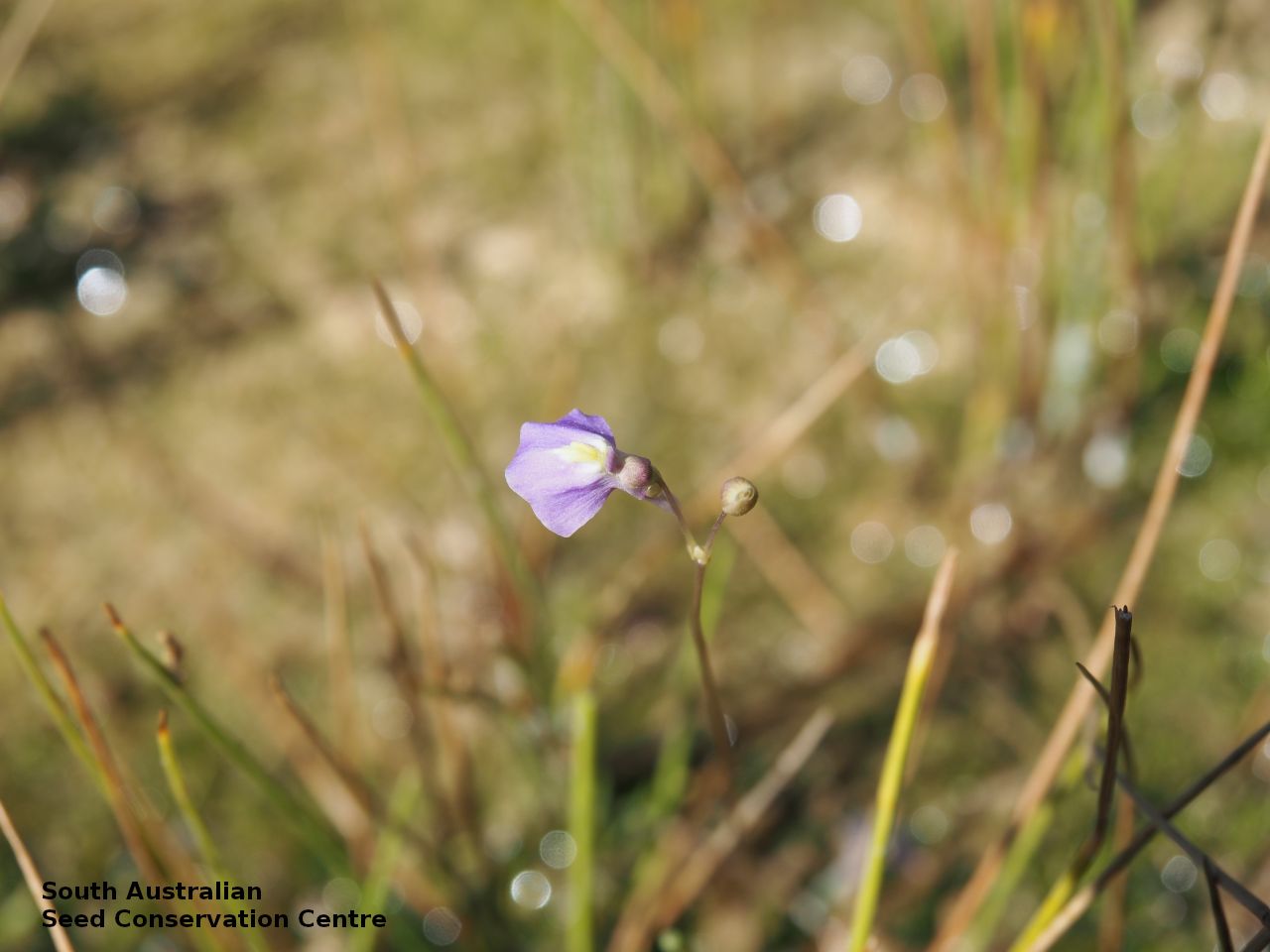
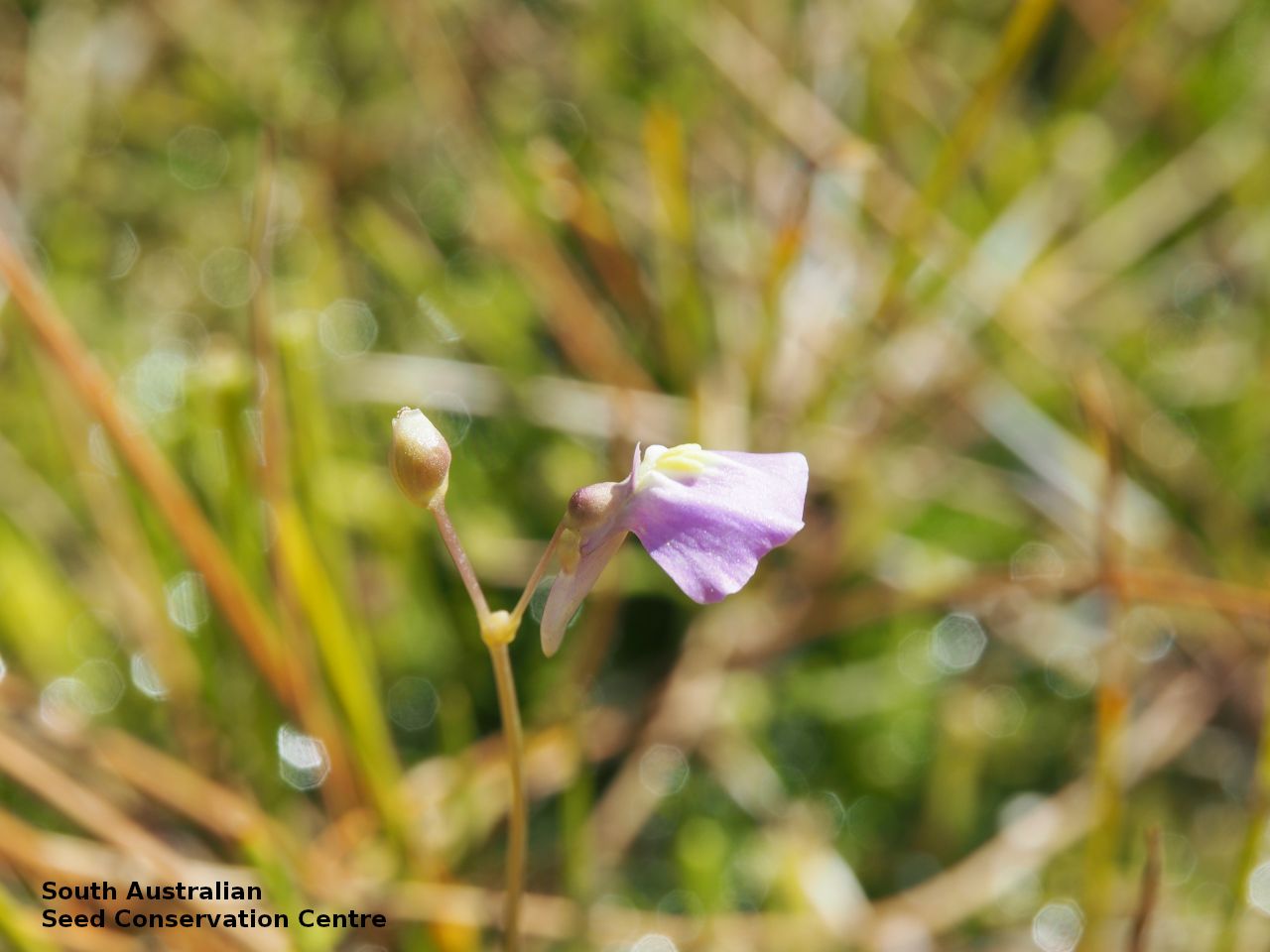


Common names
Inland bladderwort
Mound Spring Bladderwort
Fensham Bladderwort
Etymology
Utricularia from the Latin 'utriculus' meaning a small bottle or bladder; referring to a small insect trapping sac attached to the underground leaves. Fenshamii named after Associate Professor Roderick Fensham of the School of Biological Sciences, The University of Queensland, and the Queensland Herbarium, who has contributed greatly to the knowledge of the biology and ecology of the mound springs distributed across the Great Artesian Basin.
Distribution and status
Found in the north-eastern part of South Australia, growing on permanent to semi-permanent wetlands fed by artesian discharge springs. Also found in Queensland and New South Wales. Native. Very rare in South Australia. Rare in the other states.
Herbarium region: Lake Eyre
AVH map: SA distribution map (external link)
Plant description
Small perennial, terrestrial herb. Leaves numerous, several from base and often in threes from stolon internodes, fleshy, to 8 mm long and 0.5 mm wide, linear to narrowly obovate, single nerve, apex rounded. Inflorescence erect, solitary to 250 mm long with 2–4 blue-violet flowers in opposite pairs, lower lip to10 mm long with three yellow raised ridges at base, upper lip to 5 mm long, constricted at middle. Flowering between August and May. This species differs from Utricularia dichotoma with presence of bracts and bracteoles that are basally nongibbous, corolla lower lip central ridge twice the length of neighbouring ridges. Fruits are capsule globose, 2–4 mm diam.; walls thin, dehiscing by a single, ventral, longitudinal, weakly thickened slit Seeds are brown ovoid seed to 0.8 mm long and 0.3 mm wide, with a thin mesh-like surface.
Seed collection and propagation
Collect seeds between October and May. Collect mature capsules, those turning reddish brown colour, fat and containing brown seeds. Can collect individual capsules or break off the whole stem. Place the capsules in a tray and leave to dry for two weeks. Then rub the capsules gently by hand to dislodge the seeds. Use a sieve to separate the unwanted material. Store the seeds with a desiccant such as dried silica beads or dry rice, in an air tight container in a cool and dry place.
| Location | No. of seeds (weight grams) | Number of plants | Date collected | Collection number Collection location | Date stored | % Viability | Storage temperature |
|---|---|---|---|---|---|---|---|
| BGA | 5,100 (0.16 g) | 50+ | 1-Oct-2007 | DJD897 Lake Eyre | 19-Sep-2008 | 100% | -18°C |
Number of plants: This is the number of plants from which the seeds were collected.
Collection location: The Herbarium of South Australia's region name.
% Viability: Percentage of filled healthy seeds determined by a cut test or x-ray.